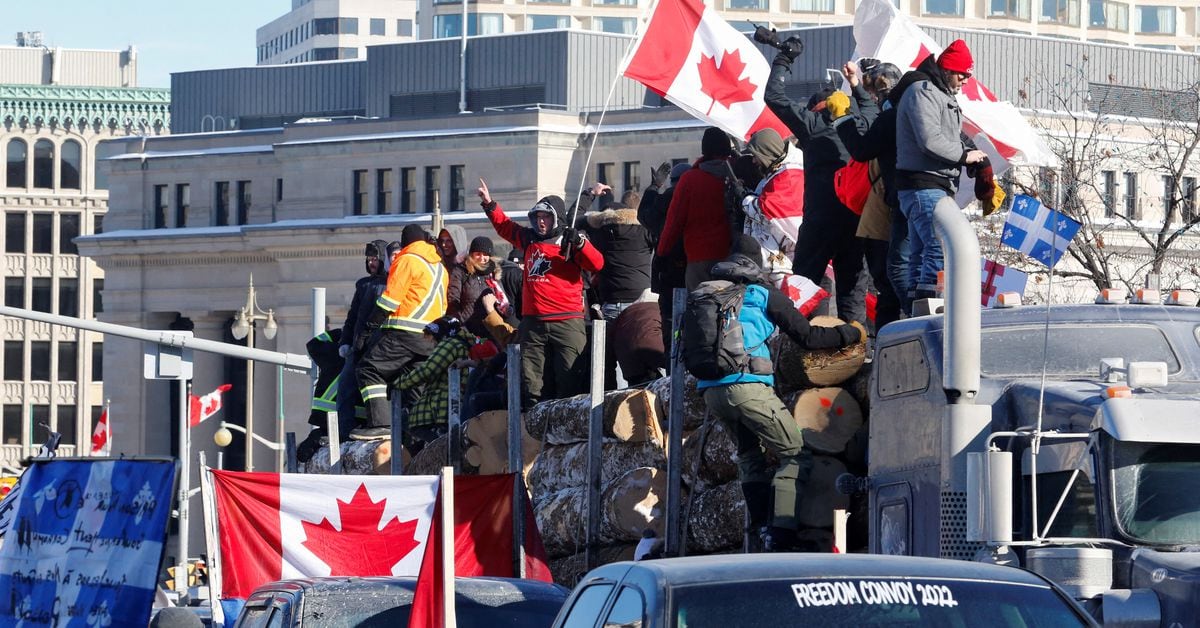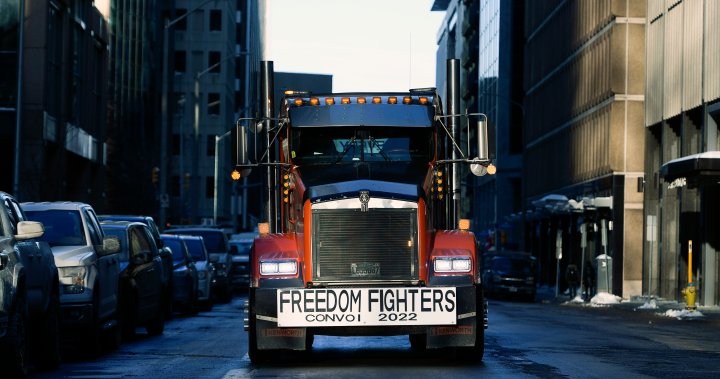geoBR
Regular Member
- Joined
- Aug 1, 2012
- Messages
- 161
- Likes
- 172
Canada, India mudslinging over Sikh farmer protests
https://asiatimes.com/2020/12/canada-india-mudslinging-over-sikh-farmer-protests/

Canadian leader plays to the Sikh crowd at home but New Delhi fears any foreign support for a revival of Punjabi separatism
By SUMIT SHARMADECEMBER 2, 2020
Sikhs in Canada have long been a thorn in India’s side because of their history of supporting separatism in India.
Along with Sikhs in the US, UK and Europe, Sikhs in Canada gave moral support and money to Sikh separatists in the early 1980s. The separatist movement to form a so-called “Khalistan” by seceding Punjab state died in the 1990s, but India remains wary of any rekindling of such activities.
Trudeau didn’t stop at that in commenting on India’s farmer protests, which have descended on the capital New Delhi in recent days.
“Let me remind you Canada will always be there to defend the rights of peaceful protest. We believe in the importance of dialogue,’’ he said. “We have reached out through multiple means directly to the Indian authorities to highlight our concerns.’’
Foreign policy experts in India read Trudeau comments as raising road doubts about the effective functioning of Indian democracy. New Delhi’s response has been predictably sharp.
“We have seen some ill-informed comments by Canadian leaders relating to farmers in India,’’ said Anurag Srivastava, spokesman for India’s Foreign Ministry.
“Such comments are unwarranted, especially when pertaining to the internal affairs of a democratic country. It is also best that diplomatic conversations are not misrepresented for political purposes.’’
Soon after Trudeau’s comments, some Sikhs based overseas began voicing anger and support for the farmers. The chorus was joined locally by actors, singers and sportsmen, increasing pressure on the Indian government.
An estimated 50,000 or so farmers mainly from Punjab and led by burly Sikhs have in recent days traveled some 450 kilometers on their tractors and tractor-trolleys prepared with bedding, cooking gas and food to last them up to four months on the streets of New Delhi.
The intermediate state of Haryana sprayed water cannons, put up metal and concrete roadblocks, barbed wire rolls and even dug up parts of the highway to prevent them from reaching Delhi.
“We have seen some ill-informed comments by Canadian leaders relating to farmers in India,’’ said Anurag Srivastava, spokesman for India’s Foreign Ministry.
“Such comments are unwarranted, especially when pertaining to the internal affairs of a democratic country. It is also best that diplomatic conversations are not misrepresented for political purposes.’’
Soon after Trudeau’s comments, some Sikhs based overseas began voicing anger and support for the farmers. The chorus was joined locally by actors, singers and sportsmen, increasing pressure on the Indian government.
An estimated 50,000 or so farmers mainly from Punjab and led by burly Sikhs have in recent days traveled some 450 kilometers on their tractors and tractor-trolleys prepared with bedding, cooking gas and food to last them up to four months on the streets of New Delhi.
The intermediate state of Haryana sprayed water cannons, put up metal and concrete roadblocks, barbed wire rolls and even dug up parts of the highway to prevent them from reaching Delhi.
Farmers are asking the central government to withdraw three farm laws, which they say are against their interests and would expose them in the future to manipulation and exploitation by large corporates and middlemen against whom they would have little recourse.

Farmers are also demanding that the government enshrine in the new laws the Minimum Support Price for their produce. The first round of talks between farmer unions and Agriculture Minister Narendra Singh Tomar on December 1 ended inconclusively.
The next round of talks will be on Thursday and could include more senior central government ministers.
Farmers from other states including Haryana, Rajasthan Uttar Pradesh, Bihar, Andhra Pradesh and Karnataka are reportedly supporting the protests, and many have joined the protesters in Delhi. Other anti-government figures have begun joining in as well.
Protesters have blocked several main highways leading into Delhi, stopping the movement of passenger and goods traffic of essential supplies.

What worries the government most is that Sikhs also form a critical part of the armed forces and various security forces. Taking advantage of separatism in the 1980s and early 1990s, Pakistan fueled the escalation with weapons, money and by declaring support for the creation of Khalistan.
That era of terrorism claimed thousands of lives, including that of former Prime Minister Indira Gandhi. On June 24, 1985, Sikh terrorists in Canada planted bombs on two Air India jumbo jets. One crashed into the sea off Cork in Ireland, killing all 329 onboard.
The other bomb exploded at Tokyo’s Narita airport before the delayed aircraft could take off. At the time, India was known to be extremely upset with lax security for flights to India originating from Canadian airports.
The government of Canada has been careful over the years not to hurt India’s sensitivities. Yet its politicians, many of them depending on Sikh votes and elected members for support, often cross what New Delhi sees as a red diplomatic line.
Punjabi is the third most-spoken language in Canada after English and French. A fifth of all Canadian Sikhs live in Surrey, British Columbia and Brampton, Ontario, while the rest are scattered throughout the country with concentrations in Calgary and Abbotsford.
Punjabi separatists have tried to revive the cause sporadically without much response, though some Sikhs from the US and Canada still declare their support for the creation of an independent Khalistan.

Earlier this year, for instance, a group called “Sikhs for Justice” held a “Punjab Referendum 2020” to muster support but failed.
Canada’s official line is that “Canada respects the sovereignty, unity and territorial integrity of India and the government of Canada will not recognize the referendum.’’
So could the fracas with Canada escalate?
It’s unlikely but India these days has little to no tolerance for separatism and new waves of terrorism. With China encroaching into Ladakh and encouraging Pakistan on the other side, the last thing India wants or needs is even the whiff of separatism in a border state.
Asia Times Financial is now live. Linking accurate news, insightful analysis and local knowledge with the ATF China Bond 50 Index, the world's first benchmark cross sector Chinese Bond Indices. Read ATF now.
https://asiatimes.com/2020/12/canada-india-mudslinging-over-sikh-farmer-protests/

Canadian leader plays to the Sikh crowd at home but New Delhi fears any foreign support for a revival of Punjabi separatism
By SUMIT SHARMADECEMBER 2, 2020
Sikhs in Canada have long been a thorn in India’s side because of their history of supporting separatism in India.
Along with Sikhs in the US, UK and Europe, Sikhs in Canada gave moral support and money to Sikh separatists in the early 1980s. The separatist movement to form a so-called “Khalistan” by seceding Punjab state died in the 1990s, but India remains wary of any rekindling of such activities.
Trudeau didn’t stop at that in commenting on India’s farmer protests, which have descended on the capital New Delhi in recent days.
“Let me remind you Canada will always be there to defend the rights of peaceful protest. We believe in the importance of dialogue,’’ he said. “We have reached out through multiple means directly to the Indian authorities to highlight our concerns.’’
Foreign policy experts in India read Trudeau comments as raising road doubts about the effective functioning of Indian democracy. New Delhi’s response has been predictably sharp.
“We have seen some ill-informed comments by Canadian leaders relating to farmers in India,’’ said Anurag Srivastava, spokesman for India’s Foreign Ministry.
“Such comments are unwarranted, especially when pertaining to the internal affairs of a democratic country. It is also best that diplomatic conversations are not misrepresented for political purposes.’’
Soon after Trudeau’s comments, some Sikhs based overseas began voicing anger and support for the farmers. The chorus was joined locally by actors, singers and sportsmen, increasing pressure on the Indian government.
An estimated 50,000 or so farmers mainly from Punjab and led by burly Sikhs have in recent days traveled some 450 kilometers on their tractors and tractor-trolleys prepared with bedding, cooking gas and food to last them up to four months on the streets of New Delhi.
The intermediate state of Haryana sprayed water cannons, put up metal and concrete roadblocks, barbed wire rolls and even dug up parts of the highway to prevent them from reaching Delhi.
“We have seen some ill-informed comments by Canadian leaders relating to farmers in India,’’ said Anurag Srivastava, spokesman for India’s Foreign Ministry.
“Such comments are unwarranted, especially when pertaining to the internal affairs of a democratic country. It is also best that diplomatic conversations are not misrepresented for political purposes.’’
Soon after Trudeau’s comments, some Sikhs based overseas began voicing anger and support for the farmers. The chorus was joined locally by actors, singers and sportsmen, increasing pressure on the Indian government.
An estimated 50,000 or so farmers mainly from Punjab and led by burly Sikhs have in recent days traveled some 450 kilometers on their tractors and tractor-trolleys prepared with bedding, cooking gas and food to last them up to four months on the streets of New Delhi.
The intermediate state of Haryana sprayed water cannons, put up metal and concrete roadblocks, barbed wire rolls and even dug up parts of the highway to prevent them from reaching Delhi.
Farmers are asking the central government to withdraw three farm laws, which they say are against their interests and would expose them in the future to manipulation and exploitation by large corporates and middlemen against whom they would have little recourse.

Farmers are also demanding that the government enshrine in the new laws the Minimum Support Price for their produce. The first round of talks between farmer unions and Agriculture Minister Narendra Singh Tomar on December 1 ended inconclusively.
The next round of talks will be on Thursday and could include more senior central government ministers.
Farmers from other states including Haryana, Rajasthan Uttar Pradesh, Bihar, Andhra Pradesh and Karnataka are reportedly supporting the protests, and many have joined the protesters in Delhi. Other anti-government figures have begun joining in as well.
Protesters have blocked several main highways leading into Delhi, stopping the movement of passenger and goods traffic of essential supplies.

What worries the government most is that Sikhs also form a critical part of the armed forces and various security forces. Taking advantage of separatism in the 1980s and early 1990s, Pakistan fueled the escalation with weapons, money and by declaring support for the creation of Khalistan.
That era of terrorism claimed thousands of lives, including that of former Prime Minister Indira Gandhi. On June 24, 1985, Sikh terrorists in Canada planted bombs on two Air India jumbo jets. One crashed into the sea off Cork in Ireland, killing all 329 onboard.
The other bomb exploded at Tokyo’s Narita airport before the delayed aircraft could take off. At the time, India was known to be extremely upset with lax security for flights to India originating from Canadian airports.
The government of Canada has been careful over the years not to hurt India’s sensitivities. Yet its politicians, many of them depending on Sikh votes and elected members for support, often cross what New Delhi sees as a red diplomatic line.
Punjabi is the third most-spoken language in Canada after English and French. A fifth of all Canadian Sikhs live in Surrey, British Columbia and Brampton, Ontario, while the rest are scattered throughout the country with concentrations in Calgary and Abbotsford.
Punjabi separatists have tried to revive the cause sporadically without much response, though some Sikhs from the US and Canada still declare their support for the creation of an independent Khalistan.

Earlier this year, for instance, a group called “Sikhs for Justice” held a “Punjab Referendum 2020” to muster support but failed.
Canada’s official line is that “Canada respects the sovereignty, unity and territorial integrity of India and the government of Canada will not recognize the referendum.’’
So could the fracas with Canada escalate?
It’s unlikely but India these days has little to no tolerance for separatism and new waves of terrorism. With China encroaching into Ladakh and encouraging Pakistan on the other side, the last thing India wants or needs is even the whiff of separatism in a border state.
Asia Times Financial is now live. Linking accurate news, insightful analysis and local knowledge with the ATF China Bond 50 Index, the world's first benchmark cross sector Chinese Bond Indices. Read ATF now.




































